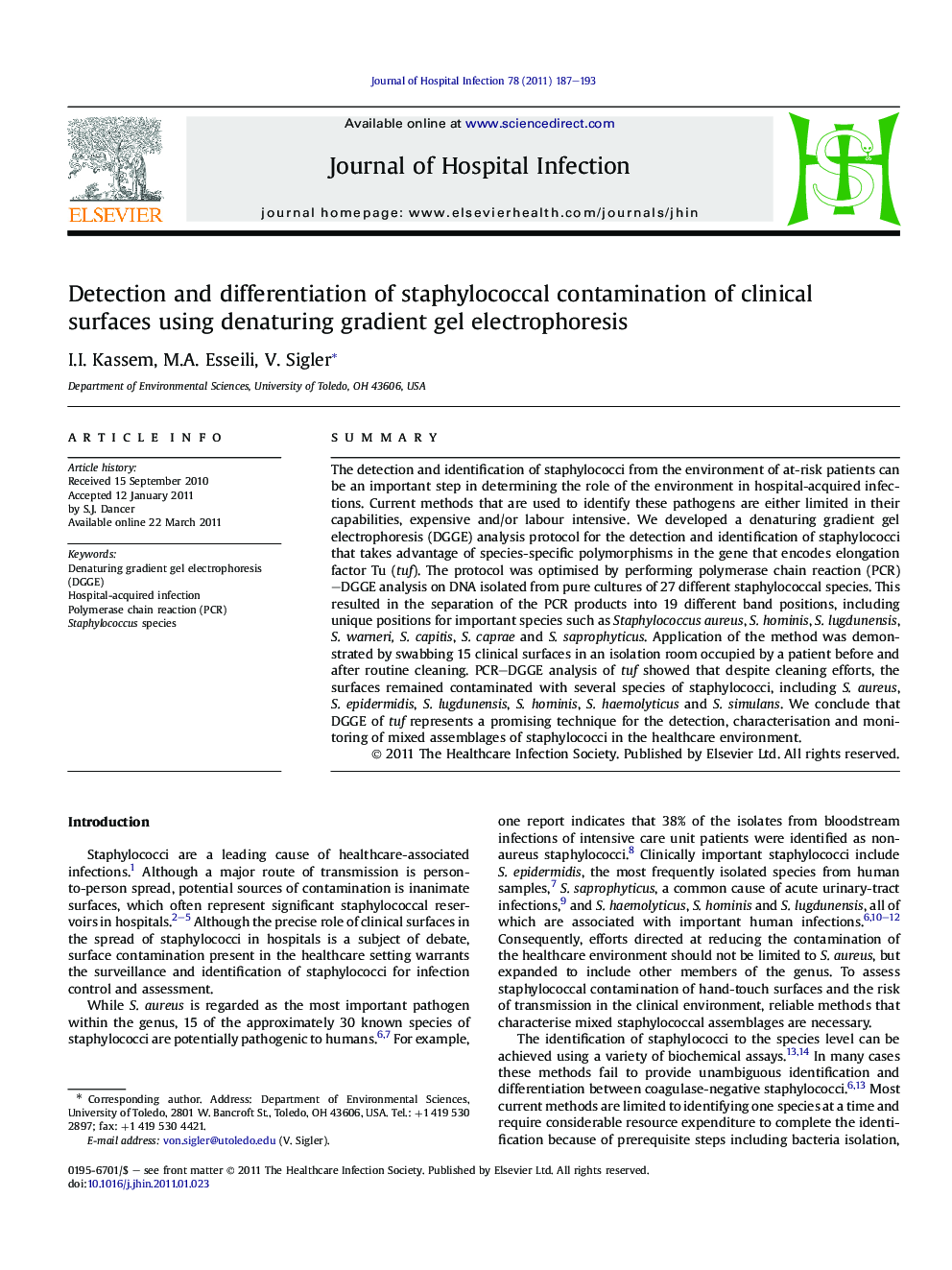| Article ID | Journal | Published Year | Pages | File Type |
|---|---|---|---|---|
| 3372211 | Journal of Hospital Infection | 2011 | 7 Pages |
SummaryThe detection and identification of staphylococci from the environment of at-risk patients can be an important step in determining the role of the environment in hospital-acquired infections. Current methods that are used to identify these pathogens are either limited in their capabilities, expensive and/or labour intensive. We developed a denaturing gradient gel electrophoresis (DGGE) analysis protocol for the detection and identification of staphylococci that takes advantage of species-specific polymorphisms in the gene that encodes elongation factor Tu (tuf). The protocol was optimised by performing polymerase chain reaction (PCR)–DGGE analysis on DNA isolated from pure cultures of 27 different staphylococcal species. This resulted in the separation of the PCR products into 19 different band positions, including unique positions for important species such as Staphylococcus aureus, S. hominis, S. lugdunensis, S. warneri, S. capitis, S. caprae and S. saprophyticus. Application of the method was demonstrated by swabbing 15 clinical surfaces in an isolation room occupied by a patient before and after routine cleaning. PCR–DGGE analysis of tuf showed that despite cleaning efforts, the surfaces remained contaminated with several species of staphylococci, including S. aureus, S. epidermidis, S. lugdunensis, S. hominis, S. haemolyticus and S. simulans. We conclude that DGGE of tuf represents a promising technique for the detection, characterisation and monitoring of mixed assemblages of staphylococci in the healthcare environment.
